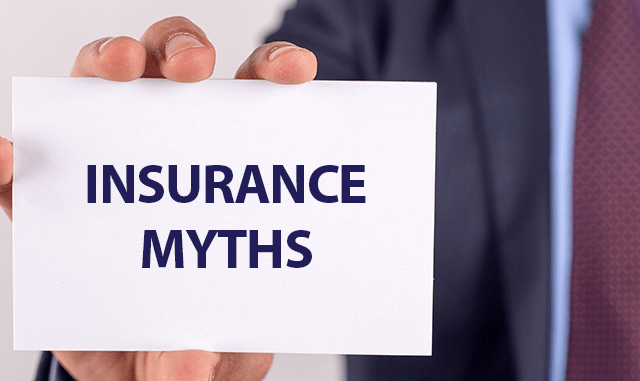
Top 5 Insurance Myths That Could Be Costing You Money
Insurance is one of the most important financial tools in modern life. It protects our health, homes, vehicles, and even our loved ones in times of need. Yet, many people base their insurance decisions on outdated beliefs, partial truths, or outright misinformation. These insurance myths can lead to poor coverage, denied claims, or overspending — all of which can cost you serious money over time.
In this article, we’ll debunk the top 5 insurance myths that may be hurting your wallet and your peace of mind.
Myth 1: “I’m Young and Healthy, So I Don’t Need Insurance”
Why People Believe It:
Many young adults assume that because they’re in good health and don’t have dependents, insurance — especially health or life insurance — is unnecessary. This is one of the most common and dangerous misconceptions.
The Reality:
Accidents, illnesses, or unexpected events can happen at any age. A hospital stay from a car accident or sudden illness can cost thousands (or tens of thousands) of dollars. Without health insurance, you’d have to cover all of it out of pocket.
Additionally, buying life or health insurance when you’re young and healthy means lower premiums. Locking in a low rate now could save you thousands over the long term, especially if you develop medical conditions later that could disqualify you or increase your rates.
Cost Impact:
- Paying out-of-pocket for unexpected medical emergencies.
- Higher future premiums if you delay purchasing insurance.
Myth 2: “All Insurance Policies Are Basically the Same”
Why People Believe It:
Insurance terms and documents can seem confusing, leading people to believe that most policies are similar and choosing one is just a matter of price.
The Reality:
Not all insurance policies are created equal. Coverage limits, exclusions, deductibles, and add-ons (also known as riders) can vary significantly between providers. A cheaper premium may come with:
- Higher deductibles
- Limited network coverage (in health insurance)
- Excluded events (in home or auto insurance)
Failing to read and compare the details could result in being underinsured or denied when it matters most.
Cost Impact:
- Denied claims due to exclusions you didn’t notice.
- Out-of-pocket costs due to low coverage caps.
- Paying for a plan that doesn’t fit your needs.
Myth 3: “The Minimum Required Coverage Is Enough”
Why People Believe It:
Many assume that the government-required or lender-required minimum insurance (such as minimum auto liability coverage or basic homeowners insurance) will provide full protection.
The Reality:
Minimum coverage rarely covers the full cost of real-world losses. For example:
- Minimum auto liability may not cover all damages in a serious accident.
- Basic homeowners insurance might not include flood or earthquake protection.
- The cheapest life insurance policy may not be enough to support your family long-term.
In the event of a major claim, you could be stuck paying the difference out of pocket.
Cost Impact:
- Legal or financial liability beyond your policy’s limits.
- Major expenses not covered by basic plans.
- Long-term financial hardship for you or your family.
Myth 4: “Filing a Claim Will Always Raise My Premium”
Why People Believe It:
It’s common to hear that if you file any claim — whether it’s health, auto, or home — your premium will automatically increase. This belief often discourages people from using their insurance, even when they need it.
The Reality:
While some claims can affect premiums (especially in auto and home insurance), not all do. Many companies offer:
- Claim forgiveness programs for your first incident.
- No increase if the claim amount is below a certain threshold.
- Protection from premium hikes if you’re not at fault (e.g., being hit by another driver).
Plus, with health insurance, using your plan for preventive services, routine checkups, or even specialist visits does not raise your premium at all.
Cost Impact:
- Avoiding legitimate claims and paying expenses out of pocket.
- Letting damages worsen over time, leading to even higher costs later.
Myth 5: “Insurance Will Cover Everything”
Why People Believe It:
Many policyholders expect that once they’ve paid their premium, everything is covered — from minor repairs to rare disasters.
The Reality:
Every policy has limits, exclusions, and terms. Common things not typically covered unless added through a rider or separate policy include:
- Flood and earthquake damage (home insurance)
- Cosmetic surgery (health insurance)
- Wear and tear or mechanical breakdown (auto insurance)
- Suicide within the first two years (life insurance)
Understanding what’s not covered is just as important as knowing what is. You may need supplemental policies or add-ons for full protection.
Cost Impact:
- False expectations about coverage.
- Expensive gaps in protection.
- Denied claims for uncovered events or damage.
How to Avoid Falling for Insurance Myths
Here are a few tips to stay informed and avoid making costly insurance decisions:
1. Read the Fine Print
Always go through your insurance policy documents, or at least ask your agent to walk you through:
- Coverage limits
- Exclusions
- Deductibles
- Claim procedures
2. Ask Questions
Don’t hesitate to ask your insurer or broker to explain anything that’s unclear. It’s their job to make sure you understand what you’re buying.
3. Compare Before You Commit
Use trusted comparison tools or work with an independent broker to compare policies from multiple providers.
4. Reassess Annually
Your needs change over time. Review your insurance plans every year or after major life events (e.g., marriage, home purchase, job change).
5. Educate Yourself
Stay updated with the latest insurance trends and changes. In 2025, digital-first policies, telemedicine coverage, and wellness incentives are becoming more common — don’t miss out due to old assumptions.
Final Thoughts
Insurance is one of the smartest investments you can make for your future — if you choose and use it wisely. Unfortunately, believing myths about insurance can leave you under-protected and overpaying.
By understanding the real facts behind common misconceptions, you can make smarter insurance decisions, ensure better protection, and ultimately save money. Don’t let outdated beliefs get in the way of financial security.

